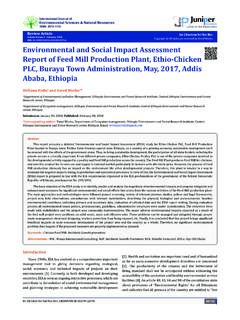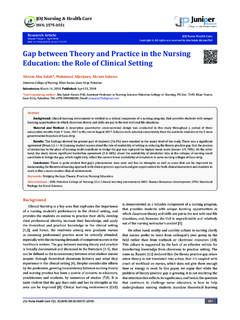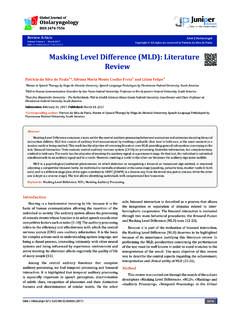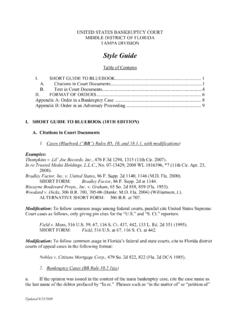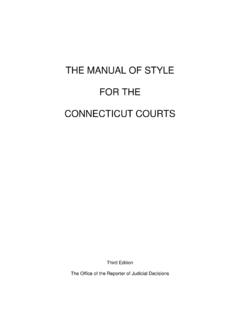Transcription of Review Article - Juniper Publishers
1 Review Article Review articles are an attempt to summarize the current state of understanding on a topic. A Review Article re-presents previously published material, rather that reporting new facts or analysis. Review articles come in the form of literature reviews and, more specifically, systematic reviews; both are a form of secondary literature. Literature reviews provide a summary of what the authors believe are the best and most relevant prior publications. Systematic reviews determine an objective list of criteria, and find all previously published original experimental papers that meet the criteria; they then compare the results presented in these papers. Manuscript Organization Running Head Characters: Up to 50. Font: Cambria (Headings). Size: 12. Alignment: Left Running head should be added in the Header along with the page numbers. Type of Article Research Article / Case Report/ Review Article / Opinion/ Short Communication/ Mini Review / Letter to Editor Title The title of the paper should provide a concise statement of the contents of the paper.
2 A good title is very important and will attract readers and facilitate retrieval by online searches, thereby helping to maximize citations. The title should include topical keywords and allude to the interesting conclusions of the paper. A title that emphasizes the main conclusions, or poses a question, has more impact than one that just describes the nature of the study. Running title A short running title', of not more than 55 characters (including spaces), for use as a headline Words: Up to 20. Font: Cambria (Headings). Size: 15. Alignment: Center Title should be in Bold and in Title Case. Authors and affiliations Author names should be given in upper- and lower-case, not in all capitals, to avoid ambiguities. The author for correspondence must be clearly indicated. It is permissible to include the names of more than one author as corresponding author, but a single author must act as the point of communication during the peer Review process.
3 The name and address of the laboratory or laboratories and university where the work was done, and present addresses of authors who have since moved. Corresponding author details Detailed Author's address, including telephone number, Fax number and email address for the corresponding author should be mentioned. Abstract Abstract should include a brief content of the Article . Please minimize the use of abbreviations and do not cite references in the abstract. This should state the objectives of the work, but should not contain a detailed summary of the results. Words: Up to 250. Font: Cambria Size: 10. Keywords Select keywords that will make your manuscript easily searchable. Three to ten keywords representing the main content of the Article Words: Up to 10. Font: Cambria Size: 10. abbreviations Please include any non-standard abbreviations referred to within your paper. A list of standard abbreviations can be found here. Font: Cambria Size: 10.
4 Introduction This outlines the state of current research and the context of the research presented. Often it will cover work previously carried out by the same research team and how the new results relate to that. Because the introduction states a lot of background material and little to no original research, it usual contains the bulk of the citations - often to larger Review papers. Font: Cambria Size: 10. Discussion This should not recapitulate the results, and should not be too long. Discussion must illustrate and interpret the report of the study. It may be helpful to list the main conclusions at the end. A combined Results and Discussion section is encouraged where appropriate. Font: Cambria Size: 10. Conclusion This section towards the end of the paper that further summaries the important results and implications. Font: Cambria Size: 10. Acknowledgements An Acknowledgements section is not compulsory but may be included. If required, Provide list of individuals who contributed in the work and grant details other than main authors.
5 Authors may also wish to acknowledge individuals who have contributed materials, expertise or time to the study who are not named as authors. Font: Cambria Size: 10. Conflict of Interest Declare if any economic interest or any conflict of interest exists. Font: Cambria Size: 10. *If there are any sub headings in the body text, sub-categorize them accordingly under the heading in which they fall. For example: 1. Heading Sub-heading Sub-sub-heading References Throughout the paper, any statement will be backed up with notes to additional literature. These are stated in a reference section in numbered order of citation in the text towards the end of the paper. References do not necessarily come at the end, but may appear as footnotes at the bottom of the page so can be read without flicking to the back page of the paper each time. List all authors if less than six. If more than five authors, list the first five followed by Provide the link for the listed references Font: Cambria Size: 10.
6 General style of reference 1. Journal References Author name/s (Year) Title of Article . Journal short name Volume(Issue): Full inclusive page numbers. 2. Book References Author name/s (Year) Title of the book. (Edition), Publisher name, place, city, country, pp. full inclusive page numbers. Author name/s (Year) Chapter/ topic name. In: Author name/s (Editors.), Book name. (Edition), Publisher name, place, city, country, pp. full inclusive page numbers. 3. Conferences Author name/s (Year) Conference topic. Name of the conference, Country. Figures Figures should be clear with high resolution. Figure Legends: Description of figures/image. Font: Cambria Size: 10. Tables Font: Cambria Size: 10. Alignment: Center Table: Brief descriptive title of the table Table abbreviations : Give here full form of all abbreviations used in the table. Give the full form even if it has been explained in the text.
